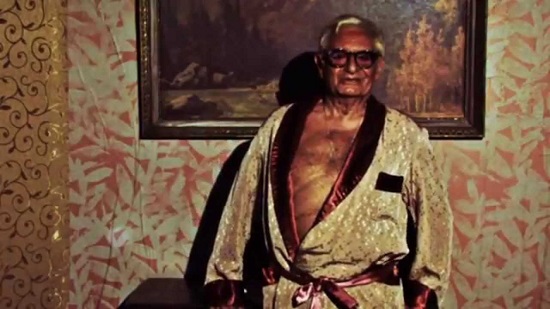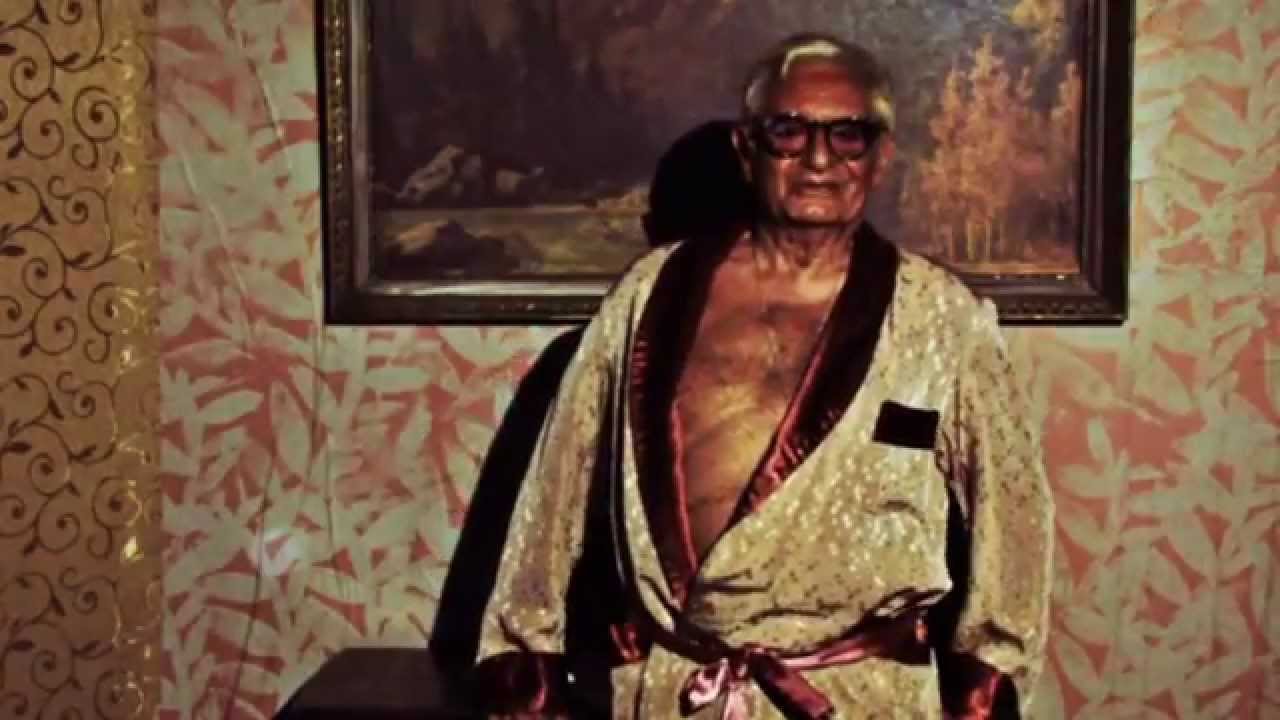A blind mother replaces her dead husband’s presence with a victrola recording, whose unannounced tiptoeing return with his ghostly drinking buddy entertains her son but completely evades her awareness. Sailors entombed beneath the ocean in a submarine gobble down specially made sea waffles for their pockets of air while debating the danger of their gelignite cargo. A man is so gruesomely ‘plagued by bottoms’ that he undergoes a series of unsophisticated Victorian brain surgeries but never becomes free of his terrible vice. And there are vampiric bananas to boot!
But that’s just a taster of The Forbidden Room’s idiosyncratic offerings. Guy Maddin has given us this and more over the course of his muscularly strange career – Glass legged beer baronesses seeking the world’s saddest song, incestuous mountain movies, docu-fantastical evocations of his Winnipeg hometown and a spectacular six minute ode to Eisenstein in The Heart of the World, which simply ends in repeatedly shouted intertitles of ‘Kino!’ as its heroine descends into the Earth’s core.
Concocted as a series of forgotten films, and filmed in front of a live audience between Montreal and the Centre Georges Pompidou in Paris, The Forbidden Room is a revelation of frame painted Freudiana, fetishes, ephemera and folly. It’s always difficult to grasp Maddin’s nonsensical yet film-sensical world in any amount of words but one thing is for sure and that’s how unrepentantly, jubilantly alive it is. The cinema screen rarely flickers so incandescently or crudely as when it curdles, burns, fragments and reforms like a colourful celluloid Catherine wheel in The Forbidden Room. Stories sonambulantly sneak into other stories and primitivist dream logic combines with unabashedly oddball ephemera in a strange and ever entertaining witches brew of b-movies.
Coherence can sometimes be a casualty in between the long detours and thwarted third acts of The Forbidden Room but it’s exactly this missing reel mindset that has brought audiences back to the award winning auteur again and again. It’s a tongue-in-cheek iconoclastic cinema with plenty of the sacred and the profane to be passed around. A filmmaker’s fever dream and a marching band of narratives gone mad that so revels in its myriad of categorisations that it ultimately defies them. So don’t get bogged down with ideas of conventional narratives, kids. Remember that it’s moviemaking as monomaniacal obsession with film as a fetish object here. Just enjoy the gleefully kinetic duotone leaping from the screen or the highly constructed Expressionist film sets that promise high adventure, emotion and danger.
None of which is to say Maddin doesn’t know his esotericism, as he indubitably does. Every strange sequence in The Forbidden Room bears the brunt of his knowledge. He just can’t resist playing with his audiences and early ‘everything goes’ pre-code cinema is his medium of choice: an early cinema that existed before the language of film we know today. Somewhere between vaudeville and documentary, early cinema waged a war of naturalism versus artifice. Editing sought new ways to move narrative along in compacted time with ellipses, cross cutting and POV shots. But before their discovery came wave after wave of attempts to explain and exploit this new art form’s potential. Maddin makes the most of this experimentation in his films with missteps, mishaps and mistakes all wrapped together in an attractive bow.
But whether you regard Guy Maddin’s films as reverent Gnostic texts from the silent era or Grimm’s fairytales by way of a Merry Melodies, it’s his constant commitment to his own ever-growing idiolect that astounds. The juxtapositions atop juxtapositions may sometimes be arch but they’re always fun, as a moment in front of any of his oeuvre will attest.
“Start with the armpit and work down to the genitals,” returning Maddin troubadour Louis Negin advises in the opening scene. And that’s really as good advice as any.
The Forbidden Room is in selected cinemas now



